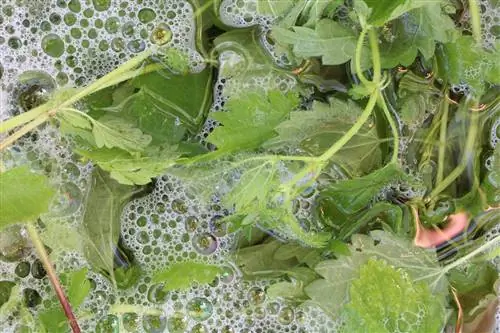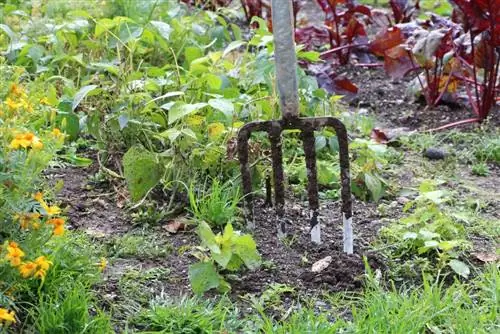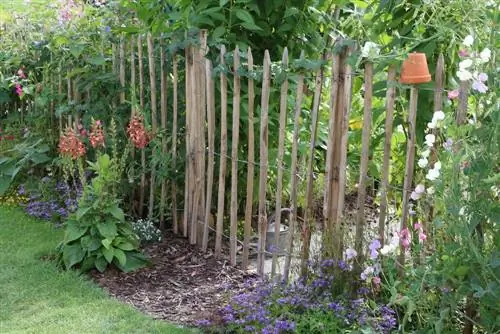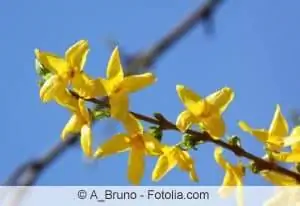- Author admin [email protected].
- Public 2023-12-17 03:39.
- Last modified 2025-06-01 06:48.
Original, sustainable and close to nature - these three words could best describe an organic garden. Chemical products from specialist retailers, such as insecticides, fungicides and fertilizers, are not used in regular work with the plants. With proper preparation and a little effort, you can obtain all the necessary elements from nature. With simple means it is possible to stimulate the development of plants and efficiently combat harmful insects.
Create natural gardens
Sustainable garden management is not a modern invention. What is often packaged under terms such as “ecological” and “organic” today was a given in the times of our great-grandparents. Chemical products make work easier these days. Be it to supply the plants in the bed with nutrients or to tackle unwanted plants such as groundweed and dandelions. The good news: you don't have to spend a few hours a day gardening to do these tasks without using store-bought products.
The main focus of an organic garden is, among other things, the ecological cultivation of the soil and the cultivation of he althy and residue-free food. The varied planting creates a species-rich retreat for the local fauna. Endangered animals and insects feel at home in the pesticide-free garden. The size of the property plays no role in sustainable planting and maintenance. You can also cultivate vegetables etc. in small areas. Another advantage: organic gardens and English lawns can be easily combined with each other. Because gardening close to nature does not necessarily mean that grasses, bushes and other plants have to grow uncontrollably.
The optimal location for beds
In terms of the basic principle, creating an organic garden is no different from that of a conventional garden. The location for the beds should meet the requirements of the respective plants. The majority of crops prefer a bright, warm place. The blazing sunlight during midday can have a counterproductive effect on the development of the perennials and make care more difficult. As a rough guide, the statement is that around 6 hours of sunshine a day is sufficient for the development of plants.
- Raised beds make care easier and protect your back
- Alternatively, use hilled beds
- A slight slope prevents waterlogging
- Avoid the immediate vicinity of traffic roads
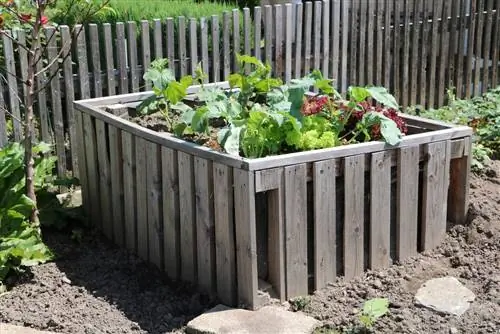
Hill and raised beds have a decisive advantage due to their structure. Semi-ripened compost, brushwood and branches are used for stability and structure. The material rots slowly and releases heat and nutrients into its surroundings during the decomposition process. Plants that are sensitive to cold and consume a lot of energy, such as spinach, benefit from this. In this way you can plant raised and hill beds early in spring.
Tip:
If late frost threatens, cover the beds with a large amount of spruce branches or straw.
The Floor
The substrate plays an important role in the cultivation and care of plants. The consistency and composition should meet the needs of the plants. While lavender and basil, for example, cannot cope with a high lime content in the soil, peas and carrots are not bothered by this. Almost all plants have one thing in common: a heavy substrate inhibits growth and can promote waterlogging.
- Loosen the soil regularly
- If the soil has a lot of clay, add sand
- Small stones permanently loosen the substrate
You can also create a small-scale organic garden on a large balcony or bright terrace. Vertical cultivation of plants has proven successful for this purpose. Use large buckets or construction tubs. The substrate in this case consists of a mixture of garden soil and small amounts of humus. Compost has no place with potted plants.
The microorganisms in the thin soil are not able to process the material efficiently. The result is mold and rot formation. For plants in pots, you should create drainage at the bottom. This usually consists of small stones or shards of pottery. In this way, excess irrigation and rain water can drain away quickly, and the underground plant parts are less susceptible to root rot.
Nutrients from nature
When cultivating an organic garden, only materials from nature are used. This also applies to fertilizing. For this reason, your own compost is part of the basic equipment. There are a few relevant points when setting up the compost facility and the rapid decomposition of the organic waste:
- Do not create compost heaps in full sun or shady locations
- Direct contact with the ground must be ensured
- Shredding larger waste
Plants such as nettles, dandelions, yarrow and fern fronds accelerate the rotting process. Alternatively, you can use an “artificial” accelerator made from natural substances. For this you need the following components:
- 1 piece of dry yeast
- 250 g sugar
- 10 liters of water
- Bucket
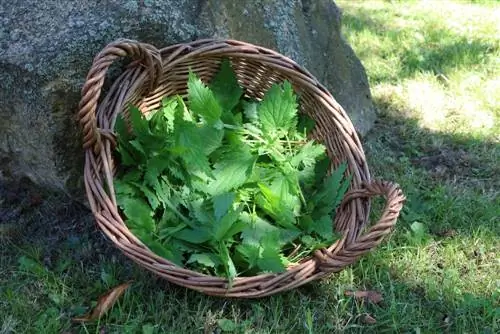
Mix all the ingredients together and let the mixture rest for a day. Then stir vigorously again and distribute evenly over the compost. Heat also helps the microorganisms decompose the compostable materials more quickly. Buying a special thermal composter is unnecessary. Cover your compost heap with dark foil in summer. Remove the material at regular intervals for a short time to allow oxygen to reach the organic waste.
Fertilize correctly
Plants need 3 factors to thrive optimally: water, light and nutrients. In a conventionally managed garden, liquid and long-term commercial fertilizers are often used. In the organic garden, however, only organic materials are allowed. Compost soil is particularly suitable for preparing beds. Once planted, it is difficult to sufficiently work the substrate into the soil. Use the following components for regular fertilization:
- Coffee or tea grounds
- Organic horn shavings
- Stinging nettle manure
- Crushed eggshells
If you want to dig a little deeper into your pockets, you can use a special organic fertilizer concentrate. These products have also been tailored to the needs of specific plants, such as tomatoes and herbs. Even with organic fertilizer, an oversupply of nutrients can occur. For plants that consume heavily, you should spread coffee grounds etc. at intervals of around 14 days. Other plants can cope with a small amount of fertilizer. It is sufficient to fertilize these plants approximately every 4 to 6 weeks.
The origin of seeds
It is less the type of plants than their origin that forms the basis of an organic garden. Collecting and drying seeds has become a passion for many gardeners. For this purpose, a few selected perennials are allowed to bloom and produce seeds. Next year's harvest depends on this method.
- Do not remove wilted inflorescences
- The seeds must mature sufficiently on the plant
- Catching falling seeds with fleece or paper
- Store in a dark, dry place
However, this measure is not always successful. Some plant species can interbreed with each other, resulting in inedible fruits. The plants in question primarily include cucurbits. Popular vegetables such as zucchini, cucumber, pumpkin and watermelon belong to this genus. Even if you use different locations for cultivation, insects can transfer the spores of other species to your plants. If you are just starting out and starting an organic garden, you will also need to obtain seeds in a different way.
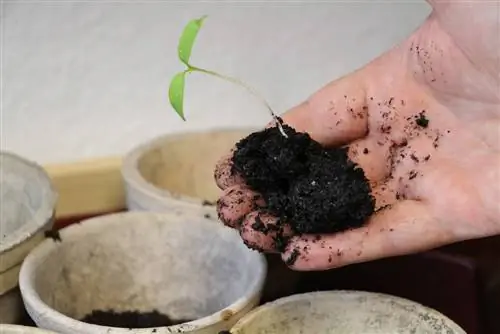
Only a few garden centers have specialized exclusively in the distribution of high-quality organic seeds. The advantage of these seeds: According to EC Organic Regulation 834/2007, the seeds come from mother plants that were grown according to strict organic guidelines. The propagation of these plants is possible at any time without any problems. With patience you can also get seeds of old and rare vegetable varieties from passionate organic gardeners.
Tip:
Avoid eating bitter gourds. A high dose of inedible cucurbitacins is responsible for the bitter taste.
Varieties
Herbs, strawberries, tomatoes and cucumbers are among the classic varieties of the organic garden. However, it is less the type of plant that is important, but rather, as mentioned above, the origin of the seeds. Cultivation is not limited to robust plants. Exotic varieties can also be planted in the naturally cultivated beds. The following plants are hardy and popular:
- Andean berries (Physalis peruviana)
- Tomatillo (Physalis philadelphica)
- Eggplant (Solanum melongena)
- Watermelons (Citrullus lanatus)
- Kiwano (Cucumis metuliferus)
- Pineapple cherry (Physalis pruinosa)
Pay attention to the requirements and needs of the plants. For some, growing on the windowsill from February makes sense. Increase the chances of germination by wrapping the container with clear film. In the first days of life there is no difference in terms of care for the plants:
- The substrate must not dry out
- Avoid bright sunlight
- Fertilization is only carried out approximately 2 weeks after germination
The roots of the young plants must not grow together. When the seedlings have developed 2 to 3 pairs of leaves, they must be pricked out. Prepare small pots with regular garden soil and lift the plants out of the growing container with a spoon. As soon as the temperatures outdoors allow it, you can move the plants into the bed. For perennial, cold-sensitive perennials, it is worth planting in a large container.
Tip:
You can share the seeds of your organic plants with other gardeners or exchange them for other varieties.
Crop rotation

Observing crop rotation plays an important role in growing vegetables. The temporal sequence of different plant varieties at a location can determine the success or failure of a harvest. Anyone who uses the same space every year for the same plants is damaging the soil. The soil tires and can no longer regenerate even through the supply of nutrients. The plants suffer and become susceptible to diseases and pests. You can prevent deficiency symptoms with a varied crop rotation.
- Pay attention to cultivation breaks
- Plants of the same genus should be cultivated in the same location every 3 to 4 years
- Separate heavy eaters, medium eaters and weak eaters spatially from each other
Soil-promoting plants should be planted in the bed approximately every 4 years. Phacelia and mustard promote soil culture. In winter you can incorporate the plants into the substrate. This way you can use the space as usual again the following year. You can also protect the soil with a secondary or intermediate culture. Do not use plants that are closely related to each other. Suitable varieties are, for example:
- Scallions
- Radish
- Plucking lettuce
- Arugula
- Spinach
Mulch the soil sufficiently between the individual crops. Nettles when crushed and dried enrich the substrate with important minerals.
Plants
There is little to consider when planting itself. Make sure there is a sufficient minimum distance between the individual plants. The planting hole itself should be large enough so that the roots of the plants can develop optimally. If you want to be on the safe side, you can loosen the surrounding soil roughly with a spade or a digging fork. In an organic garden you should rely on mixed cultures. Combine vegetables, herbs and flowers together. The plant variety offers many advantages:
- The space in the bed is used efficiently
- Insects and small mammals find a protected habitat
- The spread of diseases and pests is made more difficult
Caution is advised when it comes to the composition of the plants. Not all varieties get along well with each other. Tomatoes and cucumbers are a classic example of this. Onions and beans as well as celery and potatoes should not be cultivated directly next to each other.
Pest Control
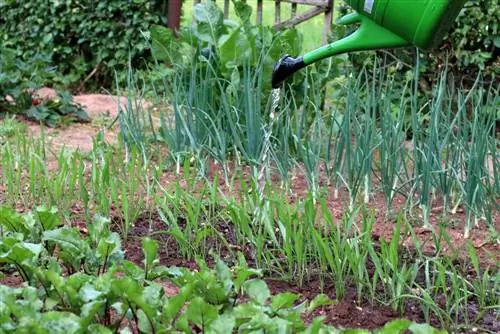
The cultivation of mixed crops makes it more difficult for pests and pathogens to spread. However, even in an organic garden you are not completely immune. You don't have to use chemicals to effectively protect your plants. You can combat many insects and diseases using biological means.
- You can get rid of mites with a solution of tansy and water
- You can get rid of aphids with a nettle decoction or a soft soap solution
- A mixture of whey and water has proven effective against mildew
- Sand or dry sawdust keeps snails away
Prevention is better than treatment. There are plants that effectively keep pests away. For example, cultivate lavender and garlic between the rows of beds. These plants keep aphids away.
Conclusion
Creating an organic garden does not necessarily involve high financial costs. Only time and working hours have to be invested. When it comes to cultivation and care, there are little differences between the individual garden types. All that is required is a little rethinking when conventional chemical products have to be replaced by biological products from nature. Sustainable management of the garden has numerous advantages and benefits people and nature alike.



